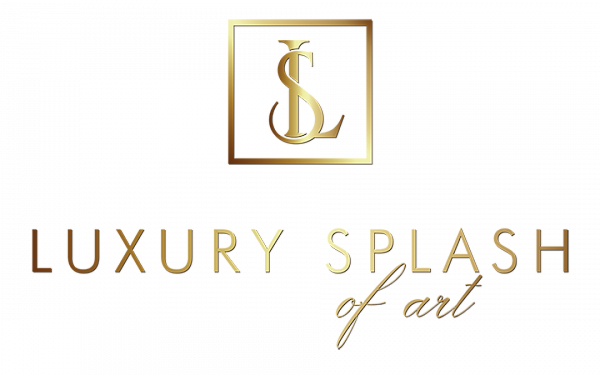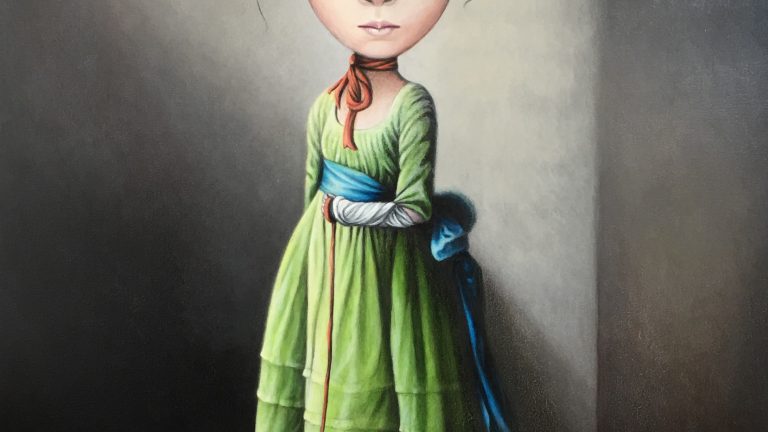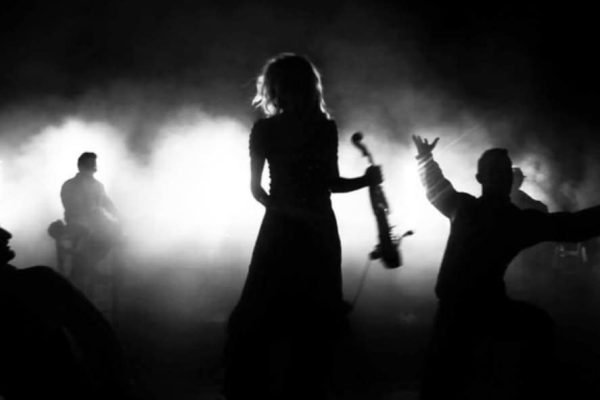An art of Emmanuelle Pellet that everybody will tell what they understand from these situations and the metaphors they read. It will be a pretext for all generations to talk about fundamental issues. We are constantly interested in childhood and how the child perceives the world surrounding them. Wonderland is not purely surreal. This is the world we observe, and it seems strange to us as if we dream it. Alice Carroll is a passive character. Our Alice is brave and curious about the world.
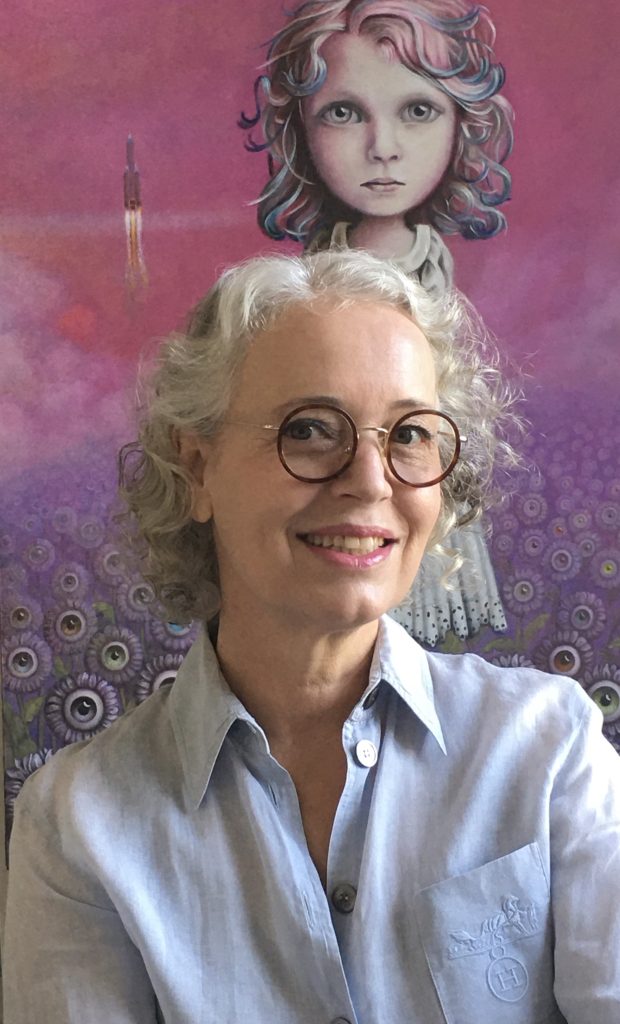
LSA; Emmanuelle you were an art teacher, but you became a painter. Could you tell us how it started?
EP: I painted and sculpted long before passing the aggregation of plastic arts (the National Education competition in France). At eight years old I was making miniature portfolios in which I stored copies of works by my favourite painters made by hand. Soon enough my everyday bag has content sketch sheets, watercolours, and all sorts of tools for keeping my hands busy, wherever I go. I was tinkering in my childhood room, recycling salvage materials gleaned from the right and left, building in shoeboxes incredible palaces with facades adorned with cornices and garlands of glued noodles. I’ve had them decorated with art objects sculpted with a cutter and a nail file in sugar cubes or chocolate squares, not to mention the statues antiques modelled in chewed gum (a green ideal for giving the effect of bronze) that I chiselled with the point of a match… I also sculpted a Winged Victory in the style of Niki de Saint-Phalle to adorn the hood of my father’s car… In short, nothing was safe from my creative fury! The professorship was the logical continuation of my taste for arts, an obvious outlet for the studies I had done at the Ecole du Louvre and at the Sorbonne in Paris, and a natural desire to transmit and train in my round youth. An exciting career in museums has kept me away from my creativity, but I had the chance to return fully to painting when my children were born.
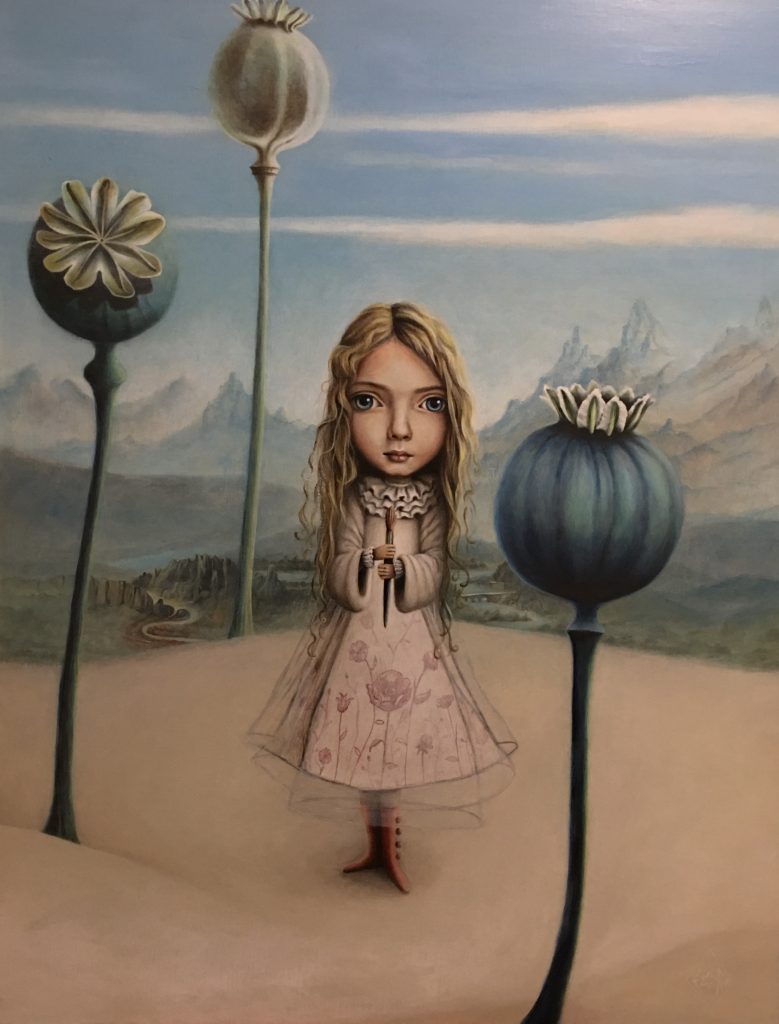
LSA: How come your art mostly contains children? What is your visual understanding, your language? How do you transfer it into your work? Is there a story behind it?
EP: I paint fragility. It is she who interests me, who upsets me. She gives back my feverish brushes because it is one of the fundamental keys to the enigma complex that is the human being. Children are a metaphor for fragility. They appear like in a fairy tale but when the good stories begin to slip. Interrupted stories, dreams disenchanted, the snapshots of life that I paint radiate a strangeness imbued with concern, innocence, and gentleness. My paintings are far away to be wise images as they might suggest at first seen; their candour and ingenuity are precisely crafted to emphasize by contrast the darkness of the world, evoked by discreet iconographic clues. Children I paint have big heads because they think and reflect; their feet and their hands are very small because they are not strong enough to compete with adults; but they see clearly with eyes immense which plunge into those of the spectator, seeking to capture his attention, his concern, his help. There is in my compositions a message worrying about the legacy we leave to generations following, whether it is an ecological emergency, armed conflicts, interests economic, scientific progress that threatens ethics, etc. In this mirror game that I hold out to the spectator, I invite everyone to find their souls as children and to reflect on their role in the world. I like heroes that life has not spoiled. I crunch them tenderly in their pathetic loneliness; I caress their features with my soft brushes and purposes; I repair their flaws by giving them a luster they could not know hope, as if to allow them to slip into the catalogue irrational of a famous master, or on the picture rails of a museum, where they could find visibility and legitimacy likely to make hear their concern.
LSA: Does your experience as an art teacher help you with the paintings?
EP: A teacher must understand students’ expectations, what motivates them, and what they need to reveal and release their strengths. The need to find a dynamic favouring the expression of their creativity, technical requirements which should not be an obstacle but on the contrary a means, and this indispensable complicity with their universe orient my painting. First, my creative process is like what I ask students: jump into the water! I paint directly on the blank canvas, without drawing beforehand, with my colours, measuring their relationships and values gradually. Appearance changes as work progresses. There are, therefore, under the final layer of the painting many regrets. I like this hidden dimension, that the failures are perfectible, that the pitfalls are overcome, that failure leads to success. Painting often resists my will, and its elaboration is a long work, tedious and sometimes risky. It is made up of countless coloured glazes, superimposed until obtaining an imperceptible model, the illusion depth, the radiance of shimmering reflections, the warmth of skin, and the colour of a spirit. The cracks that result from the tugging between these different layers are like wrinkles in the skin. They characterize a living organism that bears the traces of trials. Then the duty to transmit the history of the arts is a singular aspect of my pictorial practice, which pays homage to masters and creators of all eras. So indeed: a passion for the child in the making, technical requirements, and artistic culture are essential aspects of my role as a teacher and that inspire my painting.
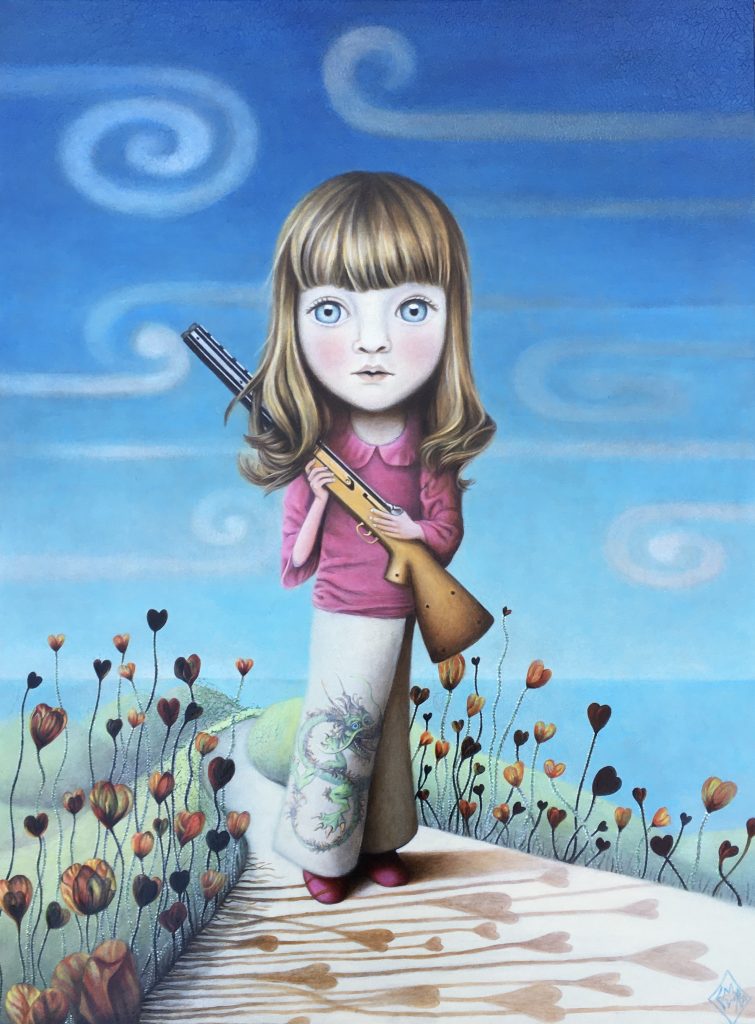
LSA: I find your paintings very theatrical, surreal, and influenced by Dutch masters such as Vermeer. Sometimes it feels like travelling to another world, like Alice in Wonderland. Can you explain to us the thought process that allows you to visualize your works?
EP: Theatre is an aspect of the teaching profession. Imagine yourself on a scene with about sixty more or less captive eyes fixed on you. At the end of your show, the students must be seduced, surprised, and provoked to come out of their reserve to act in their turn. The energy that must be summoned to reveal what lies dormant in them goes through techniques, tricks, pranks, a voice, diction, and a costume. To teach perspective a purely theoretical course will be useless; it would be better to invite the students to lie on the ground to observe the underside of tables and chairs, draw what they see, and then have them climb on it to compare their observations; after that, it will be easy to approach the vanishing point, the line of the horizon and the rules of construction of an illusionist space. The masterpieces of the past are fundamental landmarks. It may be a professional deformation for me, having worked almost twenty years in art museums. But I sincerely believe that a painter who pretended to do nothing of their duty would be lacking in sincerity. Whatever we paint, we are indebted to the past. Having lived in countries, such as Singapore, where there is no cultural tradition comparable to that we have had in Europe for centuries, I have seen how much this impacts the practice of artists. For these countries in which I have lived, I have been amused to create an imaginary museum of what the old masters would have been able to paint there, hence my re-readings of Vermeer, Rembrandt, Greuze or Picasso. Indeed, my paintings invite you to travel in an unreal world, in fiction, like the visual arts class which is an artificial space created from scratch to provoke a reaction. My work as a painter is soaked in all that; the world I create seeks to spark the amazement felt when we tip over, like Alice, in the land of wonders.
LSA: Your portraits mainly focus on the eyes. Some people say the eyes are the soul and they can tell more than only 1000 words. Do you think they are right?
EP: The eyes are the foundation of painting: without looking, there is nothing just paint. Even a blind painter, deprived of this retinal relationship, needs someone’s gaze to make his picture. A sculpture is not dependent on this reality because one can apprehend it by touch. They are also a privileged vector of emotion; the slightest disturbance is reflected in it e cannot lie with the eyes; they are the door that gives access to the depth of a human being, a reflection of the soul. So, I paint not so many portraits as eyes. Even in my paintings which do not show it is always about them: one of my rain landscapes still speaks with his eyes because he is crying. But painting is also and above all the eye of the beholder: when I directed the educational activities of the Louvre Museum, I brought in a psychoanalyst in direct contact with the paintings in the rooms, including Narcisse and Echo by Nicholas Poussin. It was edifying to see how each spectator concealed such and such a detail in his description of the painting. We appropriately titled the activity “it concerns me”. The laboratory scientist had given us x-rays, which revealed repentances: Poussin notably modified the position of an arm of Echo. The introduction of these documents aroused astonishing reactions and allowed to highlight the importance of the individual gaze in the perception of a work, look conditioned by the unconscious. So yes, the eyes say infinitely more than 1000 words since in their relationship to painting they tirelessly talk about personal stories.
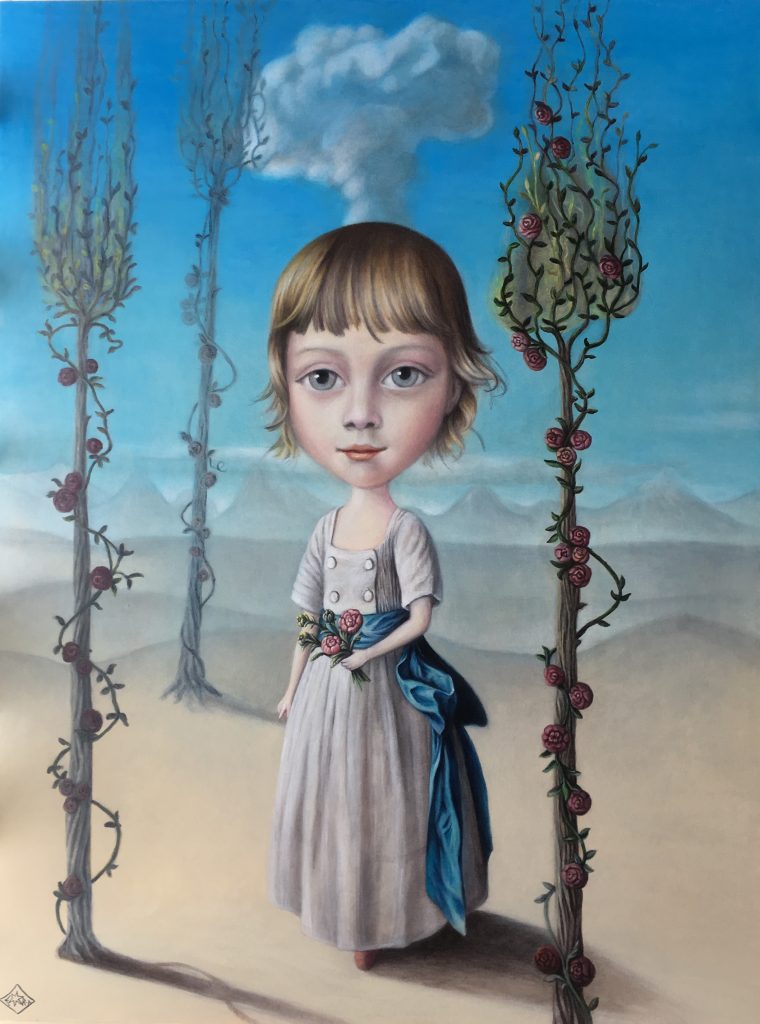
LSA: Do you choose to make your art to tell stories?
EP: Absolutely! As abstract as an art can be, it always tells. Same the most minimalist monochrome is still narrative. I like that my paintings speak to viewers. During the openings, I noticed that the collectors asked to be “told” about a painting! I prefer to say as little as possible, first of all, because I am in great difficulty deciphering what is born under my brushes, but also because it is precious that the spectator finds there a mirror of his own history, not to break the enchantment of his encounter with himself in the mirror held up to him by painting. That an art form captures someone’s attention is already the manifestation that he recognizes as a part of his history. Have you noticed in the exhibitions the unconscious journey of each other towards one work rather than another? My turn, if I could hear all the stories of visitors in front of my paintings I would be delighted!
LSA: How do you describe your style and what is your favourite medium?
EP: I rely on reality to create an imaginary world. I paint paintings that stage the beauty of the strange and the power of the imaginary. Whether it’s my series of large formats on childhood, that of “Dudes”, my Mauritian sketches, or my small formats for publishing youth: my fictions all come from the same plastic writing. They are smooth and disturbing like mirrors. They invite the spectator, between laughter and tears, devotion, and provocation, to reflect on the frontiers of taste, culture, reality, and life. We can qualify my universe of contemporary surrealism.
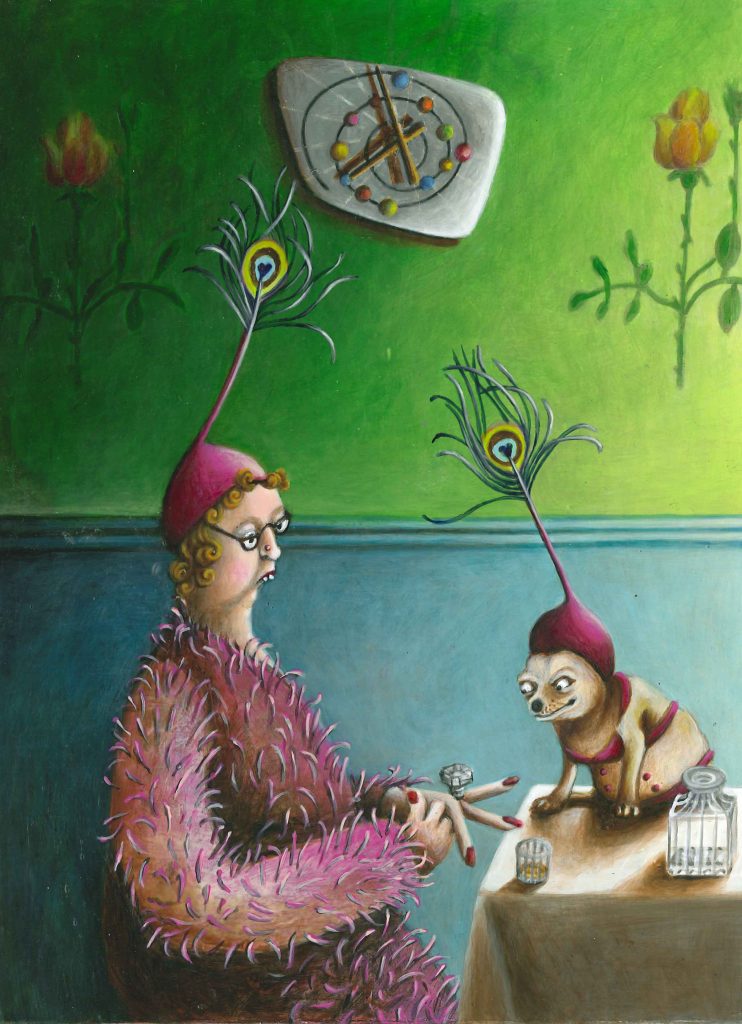
LSA: Any Plans for the future?
EP: I would like to have bronzes made in limited and numbered editions of lights that seem to have come out of my large dreamlike paintings; they are long white and anthropomorphic sculptures, which pay homage to the work of Diego Giacometti. I would dream of working there with a gallery of art, that would be interested in an interdisciplinary approach to be offered to collectors. Currently, my intimate and satirical formats arouse the interest of amateurs who bought many of them at art auctions contemporary. This vein interests me; I would like to develop some proposals in a large format this time. I am available and impatient to discuss it with new partners!
Interview by Kamila Krzyzaniak
